- +91 9820036852
- sanjeev.jain@hiranandanihospital.org
- drsanjain@hotmail.com
Hip Resurfacing
Hip Arthritis
Arthritis of hip in young patient is of greater concern all over the world. This could be due to a number of disorders such as- Primary Osteoarthritis, Avascular Necrosis (death of bone due to lack of blood supply), Trauma or Injury (previous hip fractures), Infection, Childhood hip disease, Rheumatoid arthritis, Ankylosing Spondylitis and other diseases. These disorders are more debilitating than cancer and cardiac diseases.
This high incidence of hip arthritis is really a major issue for the young patient, those barely between 20 and 30 years of age. Such debility will limit the earning capacity. In order to reduce hip pain and increase function, surgery is necessary for the patient suffering from hip arthritis.
Fortunately, there are several surgical options available to patients, and age is somewhat indicator of the type of surgery best suited. However, for the younger group, there is a viable solution, and that is hip resurfacing.
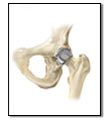
Hip Resurfacing
Hip resurfacing is a bone-conserving alternative to conventional total hip replacement (THR). Unlike THR, hip resurfacing does not involve the removal of the femoral head and neck (ball of hip bone) or removal of bone from the femur (thigh bone). In hip resurfacing head and neck is essentially re-coated with a metal cap, which is cemented onto the prepared femoral head. The socket is also relined with a cementless metal socket.
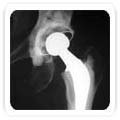
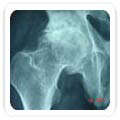
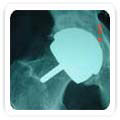
Conventional Hip Replacement versus Hip Resurfacing
A conventional hip replacement consists of three parts: a plastic cup that replaces your hip socket; a metal ball to replace the femoral head; and a metal stem that attaches to thigh bone shaft. A conventional total hip replacement reports excellent results in older patients but these results are not easily achievable in younger and more active patients who tend to wear their hip replacements out.
There is no easy solution in these patients but the newer technique of metal on metal hip resurfacing is the hope for the future.
The theory behind metal on metal hip resurfacing is that there is relatively low friction, which hopefully will provide a longer lasting solution than more standard conventional metal on plastic total hip replacements. Metal on metal bearings have demonstrated a much higher level of wear resistance as well as reduced bone loss and inflammatory tissue reaction about the hip joint as compared to metal on polyethylene bearings.
Hip resurfacing is anatomically and biomechanical more similar to the natural hip joint resulting in increased stability, flexibility and range of motion. Further, dislocation risk is virtually eliminated. Higher activity levels are typically achieved with less risk than with a THR should a revision ever be necessary. These benefits are realized because the head diameter that results from resurfacing is very similar to the patient's normal head diameter and these larger head sizes are typically much larger than the femoral balls utilized in conventional THR.
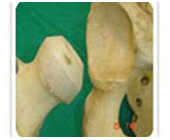
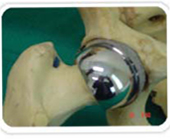
Hospitalization and Recovery
Time stay in the hospital is reduced to three days in comparison with total hip replacement in view of early mobility. Compared with a total hip replacement, limitations are far fewer as there is an almost negligible risk of dislocation of the components. This means that patients are generally walking without sticks at three to four weeks and doing most of the activities by this timerelatively quickly. Because of the negligible risk of dislocation patients do not have to use high toilet seats. Generally patients remain off work for six weeks.
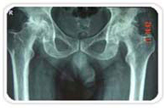
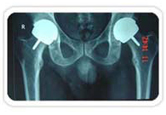
Advantages of Hip Resurfacing
The benefit thus is that this operation permits the patient to maintain a normal lifestyle quickly. There are many major advantages of hip resurfacing on conventional hip replacement. They are:
- The ball used in the system is similar to the natural ball and that in turn confers biomechanical advantages to the hip.
- Prosthesis wear out is minimal and hence no loosening.
- Improved functions and quick recovery.
- Patient can sit and squat and even can participate in sports activities.
- Allow normal range of movements of hip.
- Does not change leg length.
- Duplicates or restores normal structure of hip joint and due to bigger size of ball has hardly any chance of dislocation.

